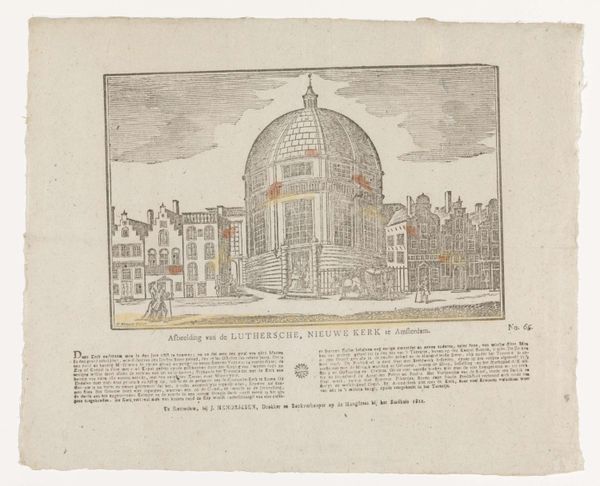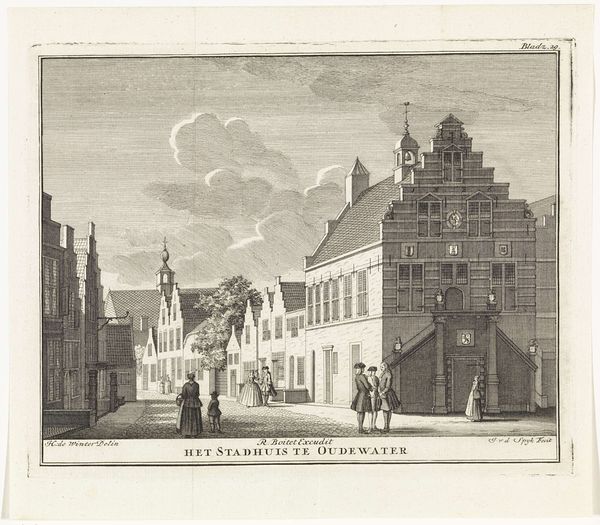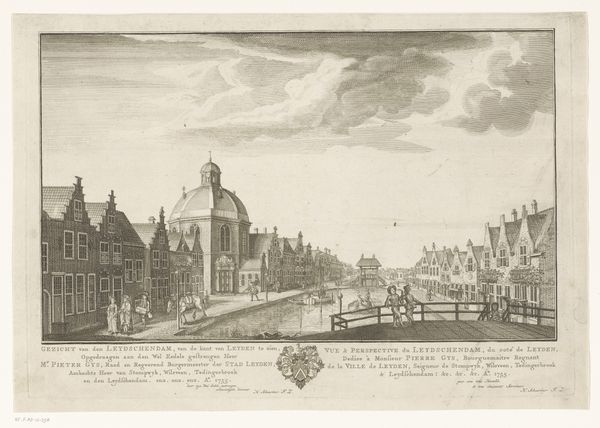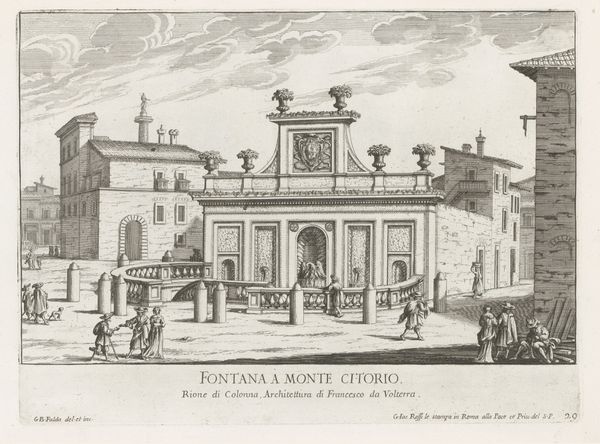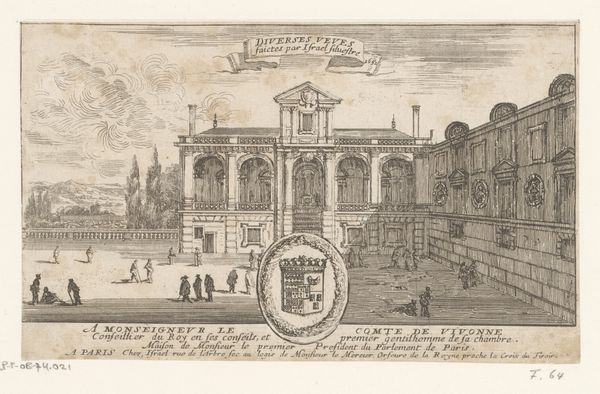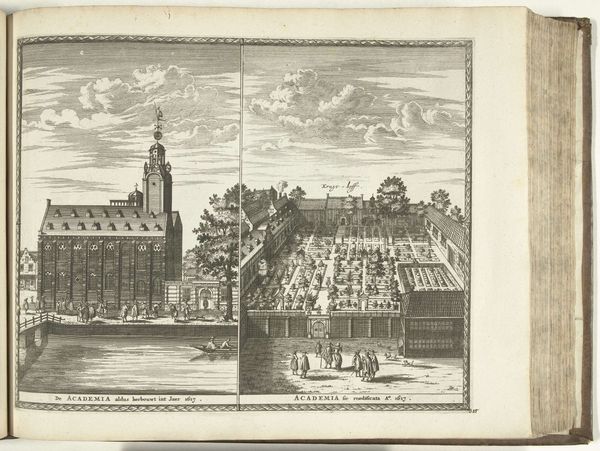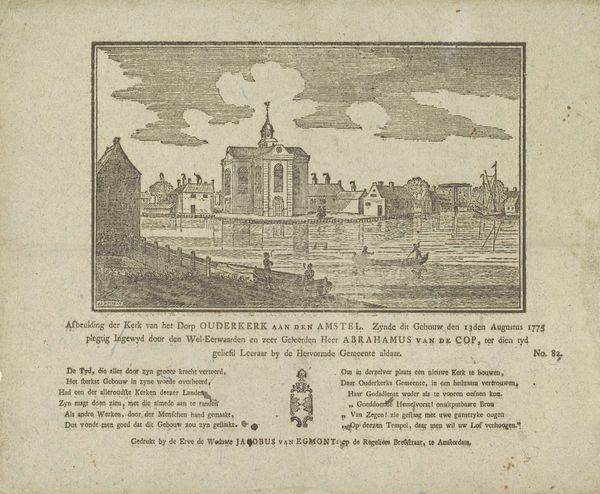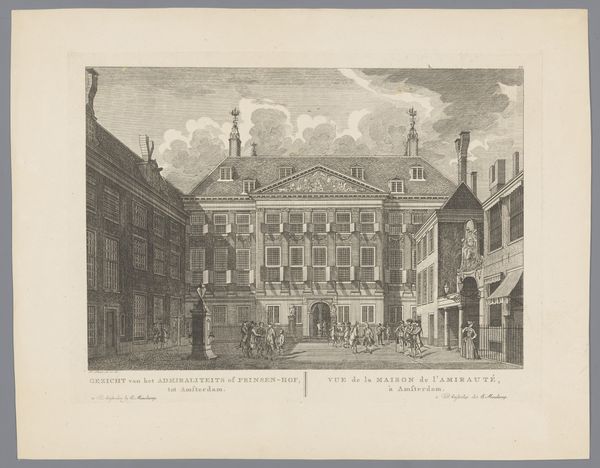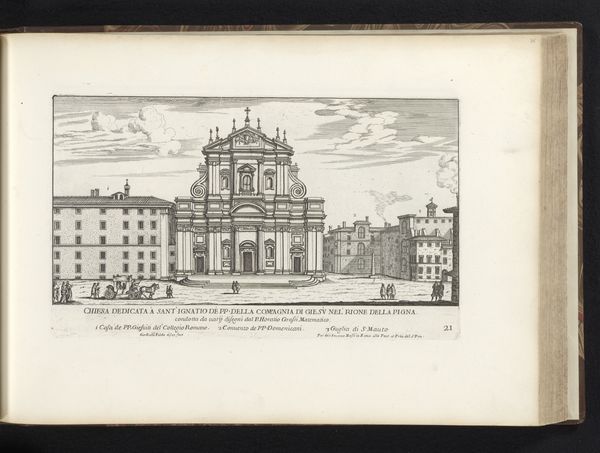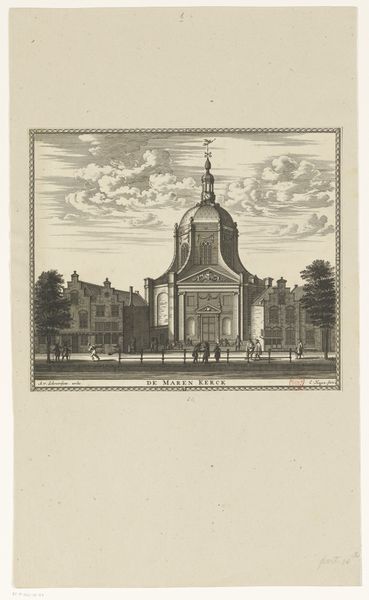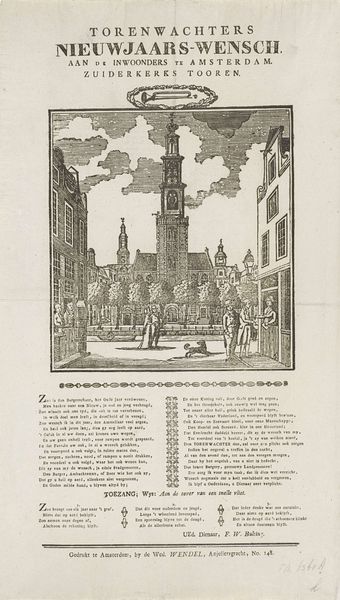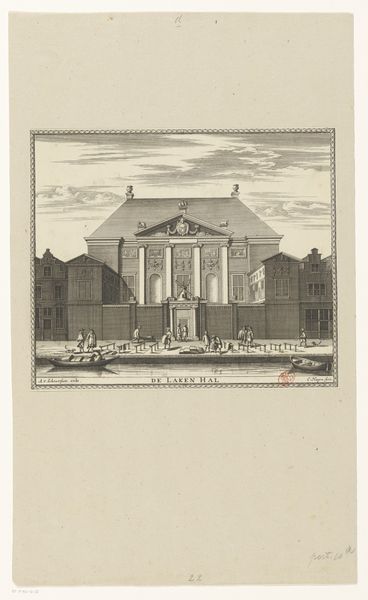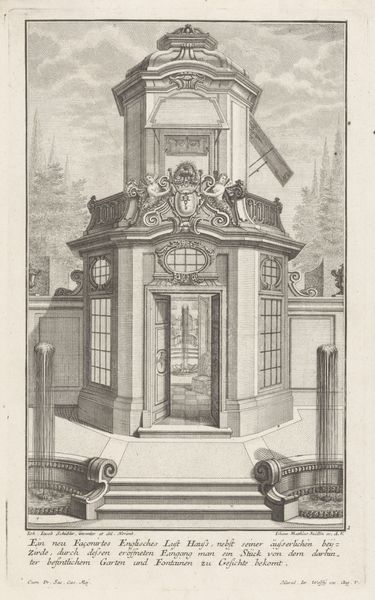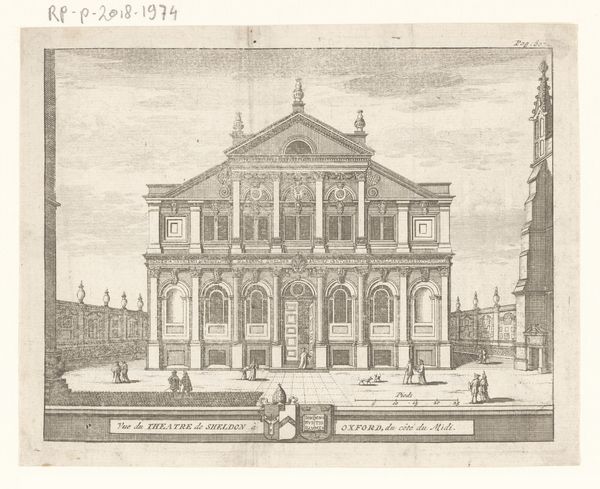
print, engraving, architecture
#
aged paper
#
dutch-golden-age
# print
#
old engraving style
#
cityscape
#
engraving
#
architecture
#
columned text
Dimensions: height 312 mm, width 410 mm
Copyright: Rijks Museum: Open Domain
Curator: Let's consider this detailed engraving from the late 18th century, “Afbeelding van de Luthersche Nieuwe Kerk, te Amsterdam” by Hermanus Numan, currently held in the Rijksmuseum. It depicts the Lutheran New Church in Amsterdam. Editor: My initial response is one of precision and almost documentary restraint. The meticulous lines give a clear sense of the architecture, yet there is a stillness that is quite compelling, like a frozen moment. The scale seems intimate despite being a cityscape. Curator: Absolutely. The engraver’s craft is evident in the way Numan uses line weight to define form and texture. Think about the production process itself; the skill required to create this image using traditional engraving techniques would have been significant, demanding years of dedicated practice. This wasn’t just art; it was a highly specialized form of labor tied to print culture. Editor: And we can’t ignore that architecture and urban planning were themselves potent social acts. Representing the Lutheran New Church in Amsterdam at this time would speak to broader narratives around religious freedom and evolving civic identities within the Dutch Republic. It also begs the question, who was this print intended for, and how might its accessibility shift based on class and gender? Curator: Those are vital questions to raise. Moreover, the work’s existence points towards an emergent consumer culture. People weren't just viewing buildings; they were purchasing representations of them, demonstrating their economic position, or civic identity. Editor: Examining how women navigated religious life opens some vital discussions about social roles and spaces. The work suggests questions around who frequents the space, and how this interacts with notions of social inclusion and visibility. Curator: Agreed. The production and consumption of this image becomes intrinsically linked to issues of social power, representation, and accessibility during the period, all filtered through the technical proficiency required to bring the image to life. Editor: Understanding artwork through this lens provides a far richer experience than simple appreciation of technical skill; it allows us to analyze how urban space was viewed, how society shaped its surroundings, and the socio-economic landscape influencing the era. Curator: It makes one think of the skilled labor, from production to distribution, embedded within even this small image, doesn't it? A powerful object lesson.
Comments
No comments
Be the first to comment and join the conversation on the ultimate creative platform.
